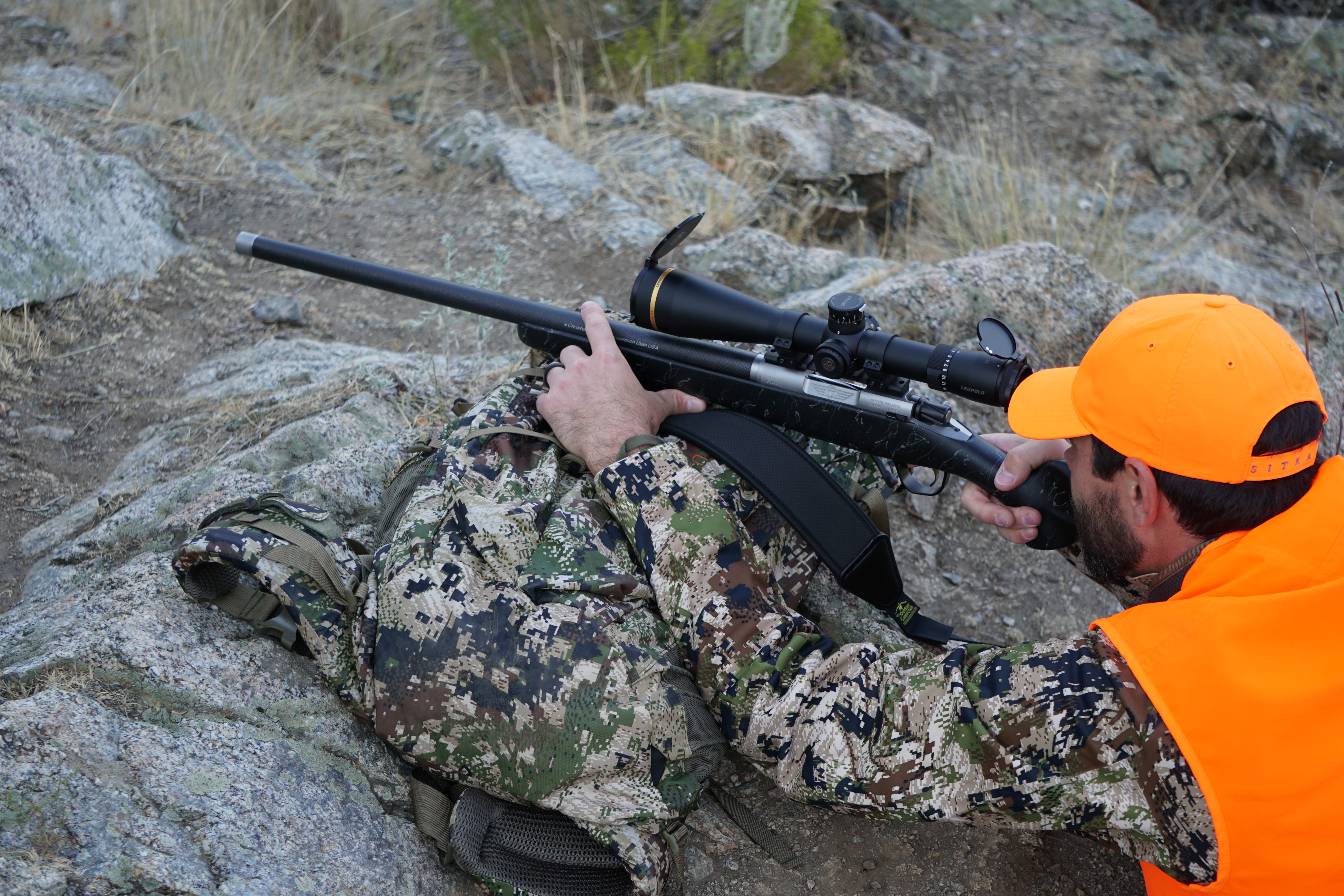By Paul Kendall
As most hunters will attest, camo is one of the staples of hunting gear. It helps disguise, protect, and keep you comfortable while travelling in the backcountry. Plus, with the evolution of camo patterns within the last few decades, what used to be green and black blobs has evolved into so many different patterns, colors, and choices. So, how do you know which piece or system is right for you? Honestly, a lot of it is up to personal preference, but here are a few tips and suggestions that I follow to help me pick the right outfit for my hunts.
Before you even look at the patterns, you want to ensure that the articles of clothing you choose will perform well. Here are some questions to consider that will help you determine the camo’s performance: Is the fabric durable and sturdy? Will it make noise if you have to unzip it or bend down? Can you reach all of the pockets and zippers easily? If your answer to questions like these is “no,” then maybe you should consider different options.
.JPG)
So, with that in mind, ask yourself what kind of weather and circumstances you're likely to encounter on your hunt. Temperatures can change drastically depending on the altitude and time of day, so having a well constructed system of pieces that I can layer makes it so I can be comfortable, no matter what nature throws at me. Other aspects to consider for your camo could be ventilation, fit zips, leg ventilation, weight, wind blocking capability, and water resistance. I hunt a lot of mule deer in places like Utah and Arizona, so I’m more concerned about wind than moisture protection, but if you’re hunting in more humid and forested climates, maybe waterproof camo will be more of a priority for you.
Once you’ve got your performance and comfort nailed down, you can move on to looking at patterns. Personally, I like patterns that “break up” the outline of my form, rather than patterns that try to mimic the nature around them. That’s just personal preference, but I find that it works for me, especially when hunting big game. The reason being: most big game animals see less colors than humans do, so they rely on movement more than color when they’re on the lookout for predators. So if you sit still, regardless of the color you’re wearing, most camo will work on them. Turkeys are another story. It takes more effort to fool a turkey with camo, since they rely on movement and visual details to keep an eye out for danger. So, taking into account the animal you’re hunting can definitely affect your camo choices as well.
Now, as I’m sure you’ve noticed, there are camo patterns available for every single season, region, altitude, etc. However, I like to find a pattern that will work for me no matter if it’s spring or fall, or high or low elevation. Like I said before, performance is more important to me than pattern. I find that versatility means I get more use out of my clothes, and it makes it easier to mix and match my pieces and patterns when I need to layer up or down. And yes, you can mix camo patterns. I don’t think an animal is gonna notice if you have on K2 pants and a Subalpine hoodie. Your wife might notice, but the animal isn't going to. Every manufacturer makes certain pieces I like, so I'll mix items from all sorts of different brands that fit well and work well for me. One of my favorite all around pieces of camo that I match with all sorts of other options is the Sitka Jetstream Jacket.
You can also mix your camo with solid color earth tones. If you’re staying still and masking your scent, khaki, tan, or green pants won’t attract an animal’s attention. Plus, I find that wearing tan pants makes heading out so much easier. I can go straight from the office to the field without having to worry about changing my whole outfit. Plus, if I forget something and need to stop by a store on my way out, I don’t have to walk up and down the aisles decked out in head-to-toe camo. If I’m hunting in a ground blind, choosing my clothing is even easier because the blind does all of the camouflaging work for me. I simply wear black or other dark colors and keep the back flaps closed so that there’s no backlighting and I blend into the shadows.

So, to sum up my camo choosing philosophy: focus on you first. If you have a dependable system that works for your climate and area, I wouldn’t worry too much about buying new patterns for every possible occasion. The important thing to remember is that camo is just a tool. If you have bad technique, make a lot of noise, move too much, or skyline yourself, then no camo in the world is going to disguise you from the animals you’re hunting.
If you have any questions about picking out your own camo or would like to see what options are available to you, visit your local Sportsman’s Warehouse or their website at Sportsmans.com.

